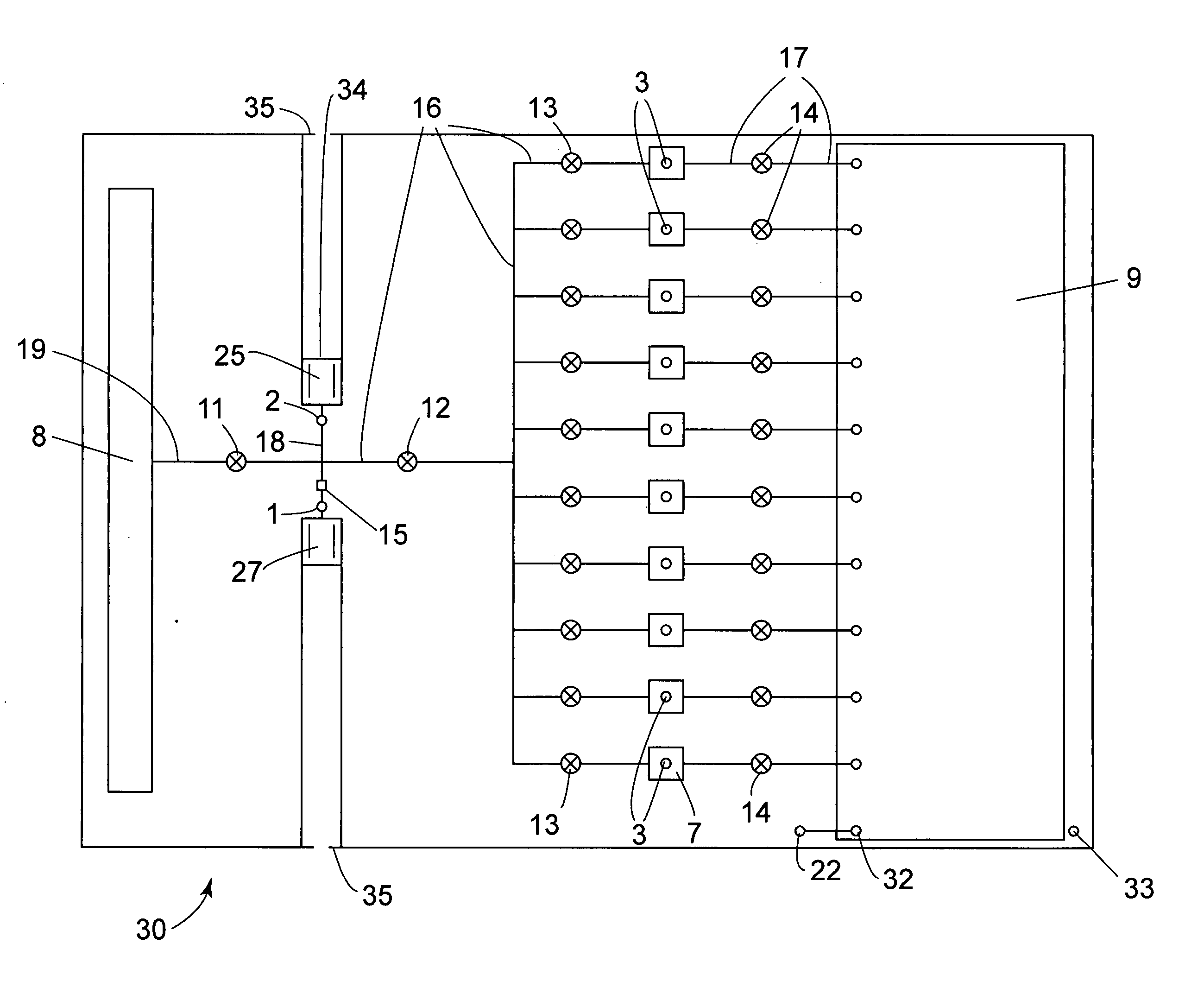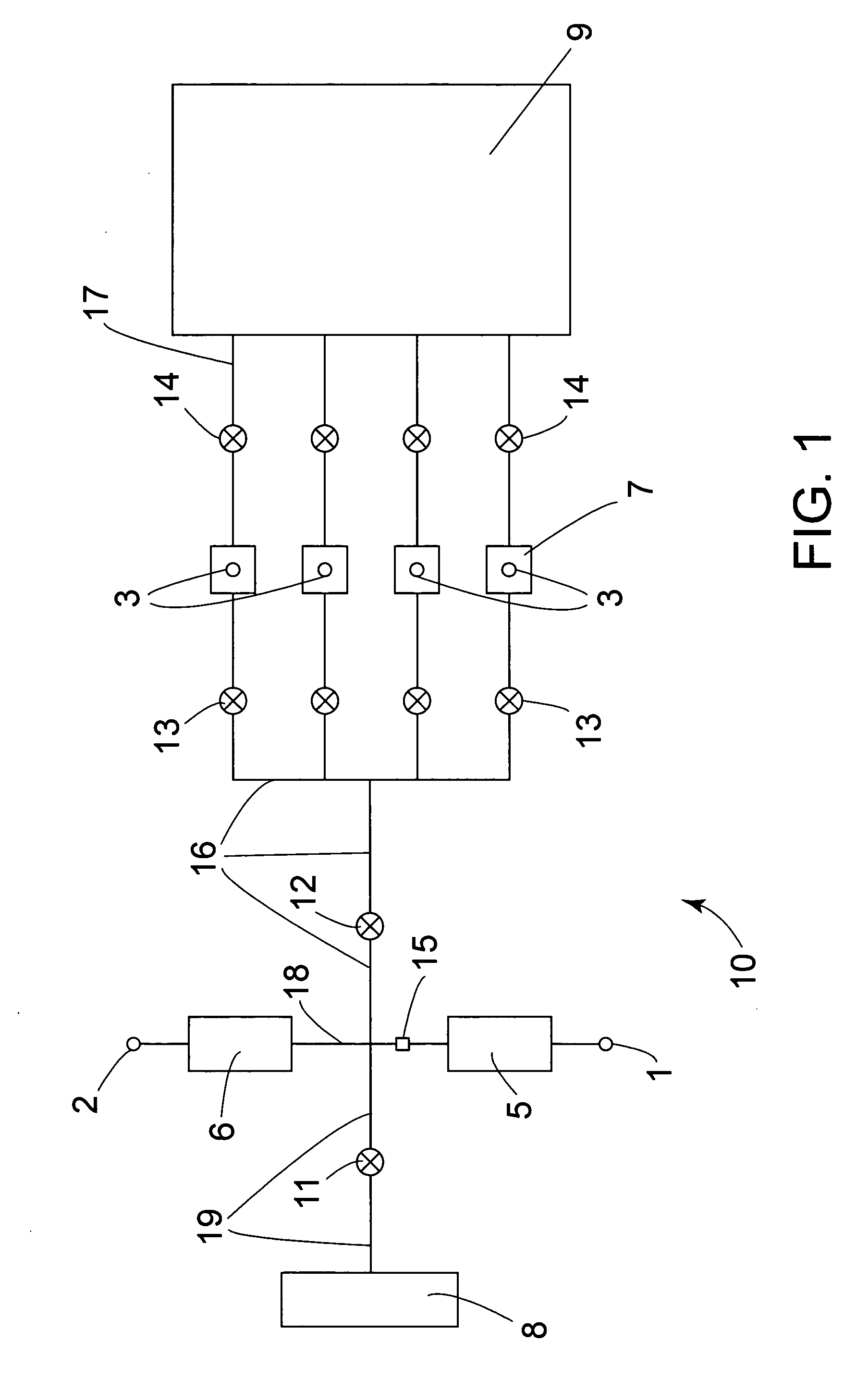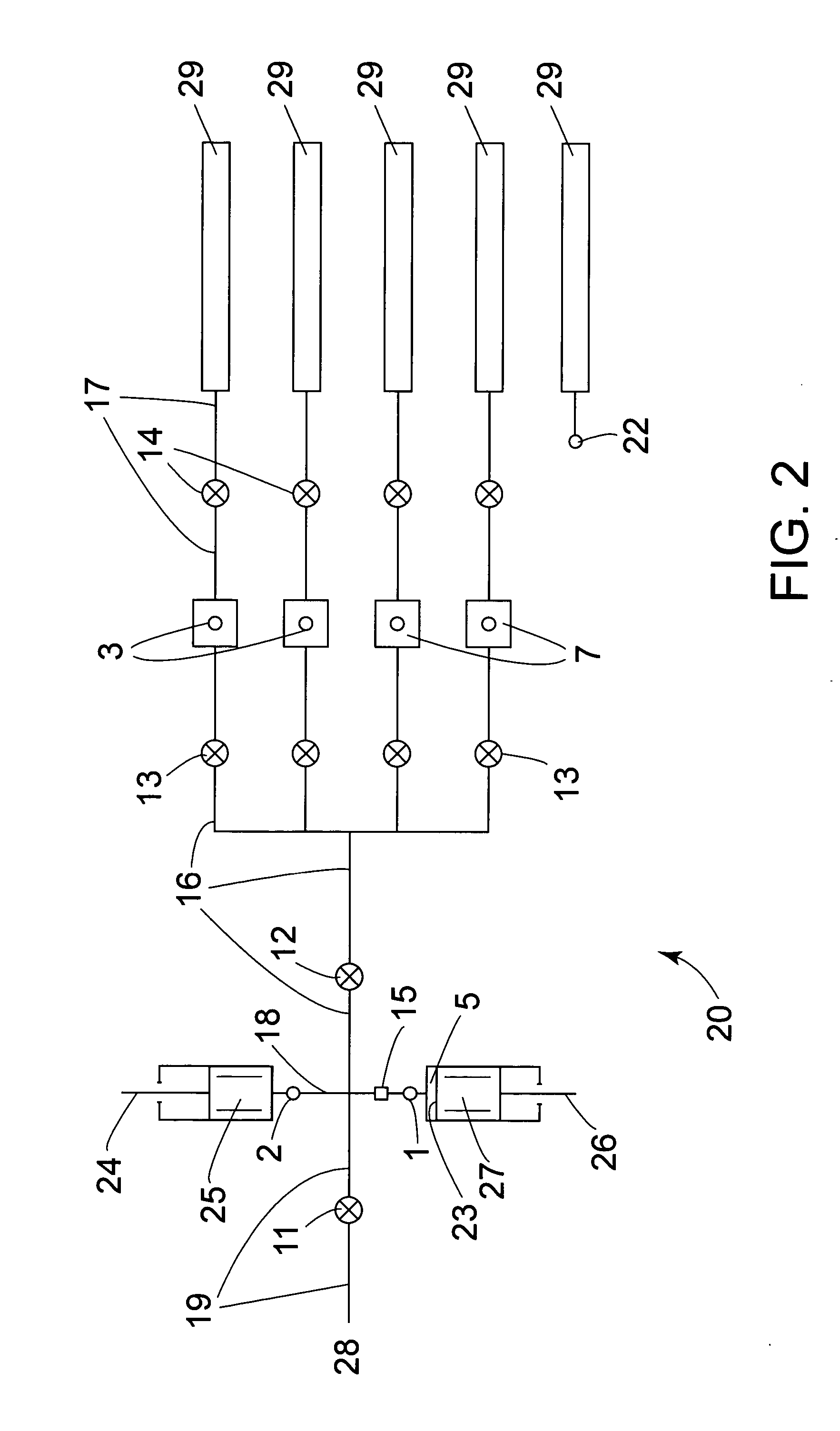Cassette for isolation, amplification and identification of DNA or protein and method of use
a technology of dna and protein, which is applied in the field of cassettes, can solve the problems of time and expense saving, silicon suffers, and the cost of silicon microfluidic devices can be relatively high, and achieves the effect of reducing the cost of silicon microfluidic devices and reducing the cost of silicon fabrication
- Summary
- Abstract
- Description
- Claims
- Application Information
AI Technical Summary
Benefits of technology
Problems solved by technology
Method used
Image
Examples
example 1
Making a Cassette of the Present Invention
[0075] The bottom plate of the cassette comprised of a UV transparent acrylic was placed face up on solid surface. A silk screen assembly manufactured by AsahiTec America, Richmond, Ind. and modified to align with the bottom plate was positioned over the bottom plate and suspended ˜1-2 mm above the bottom plate. The silk screen was 330-mesh polyester; 35μ thread diameter; 42μ mesh opening and had a 56±3μ overall thickness. A bead of U.V.-curable adhesive was manually applied directly to the silk screen (i.e., above the silk screen pattern). A squeegee (#CPS-5070 with wood handle, 70-75 durometer (Shore ‘A’ scale), A.W.T. World Trade, Inc., Chicago, Ill.) with square-edge tip was dipped into the adhesive bead on the silk screen (see above). Starting at the top of silk screen pattern, adhesive was applied to the silk screen pattern with the squeegee tip at 45-degree angle (to the perpendicular) while maintaining constant squeegee pressure an...
example 2
DNA Assay Using the Four Mixing Chamber Embodiment (FIG. 5) of the Cassette of the Present Invention
[0077] The cassette of FIG. 5 is removed from its sterile pouch and placed into the nest of an appropriate instrument. Valves 11, 12 and 43 are placed in the closed position. Pistons 25, 27, 45 and 47 are in the closed (home) positions. Four piston shafts engage the proximal ends of the four pistons, respectively, and seat therein. A biological sample (100 μL) containing nucleated cells suspected of containing target DNA is injected from a sample syringe into a first mixing chamber (MC) 5 through sample port (SP) 1. The piston 27 in MC 5 is retracted sufficiently to intake the 100 μL of sample. Lysis solution (50 μL) from reagent syringe #1 was then added to MC 5 via SP 1. The piston 27 in MC 5 is retracted sufficiently to intake the 50 μL of lysis solution. Mixing of both solutions was achieved by repeated transfers (cycling 3×) of the total volume between MC 5 and MC 6 using pisto...
example 3
Protein Assay Using the Two Mixing Chamber Embodiment (FIG. 3) of the Cassette of the Present Invention
[0078] The cassette of FIG. 3 is removed from its sterile pouch and placed into the nest of an appropriate instrument. Valves 11 and 12 are placed in the closed position. Pistons 25 and 27 are in the closed (home) positions. Two piston shafts engage the proximal ends of the four pistons, respectively, and seat therein. A biological sample (100 μL) is injected from the sample syringe (located on instrument carousel) into a mixing chamber (MC) 5 through sample port (SP) 1 while the instrument simultaneously withdraws piston 27 of MC 5 a corresponding amount to intake the volume of sample. Preferably, the biological sample is prepared to be debris and stroma free outside the cassette. A reagent dispenser outside the cassette dispenses into SP 1 75 μL of a suspension of latex beads (diameter of 2 microns or greater) having a target specific antibody thereon. Simultaneously, piston 27...
PUM
| Property | Measurement | Unit |
|---|---|---|
| wavelengths | aaaaa | aaaaa |
| thick | aaaaa | aaaaa |
| thick | aaaaa | aaaaa |
Abstract
Description
Claims
Application Information
 Login to View More
Login to View More - R&D
- Intellectual Property
- Life Sciences
- Materials
- Tech Scout
- Unparalleled Data Quality
- Higher Quality Content
- 60% Fewer Hallucinations
Browse by: Latest US Patents, China's latest patents, Technical Efficacy Thesaurus, Application Domain, Technology Topic, Popular Technical Reports.
© 2025 PatSnap. All rights reserved.Legal|Privacy policy|Modern Slavery Act Transparency Statement|Sitemap|About US| Contact US: help@patsnap.com



